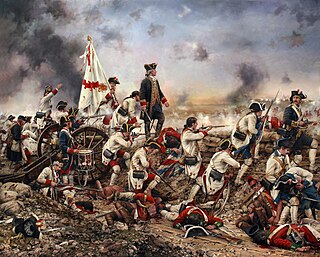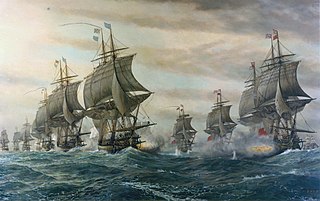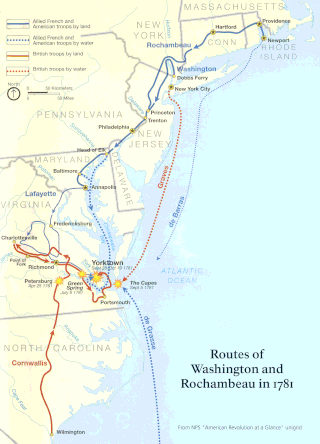This article needs additional citations for verification .(October 2020) |
Contents
Other years |
| Countries of the United Kingdom |
| Scotland |
| Sport |
| 1781 English cricket season |
Events from the year 1781 in Great Britain.
This article needs additional citations for verification .(October 2020) |
Other years |
| Countries of the United Kingdom |
| Scotland |
| Sport |
| 1781 English cricket season |
Events from the year 1781 in Great Britain.
![13 March: Uranus discovered [image in false colour]. Uranus with rings PIA01280.jpg](http://upload.wikimedia.org/wikipedia/commons/thumb/3/35/Uranus_with_rings_PIA01280.jpg/150px-Uranus_with_rings_PIA01280.jpg)

1781 (MDCCLXXXI) was a common year starting on Monday of the Gregorian calendar and a common year starting on Friday of the Julian calendar, the 1781st year of the Common Era (CE) and Anno Domini (AD) designations, the 781st year of the 2nd millennium, the 81st year of the 18th century, and the 2nd year of the 1780s decade. As of the start of 1781, the Gregorian calendar was 11 days ahead of the Julian calendar, which remained in localized use until 1923.

The Battle of the Chesapeake, also known as the Battle of the Virginia Capes or simply the Battle of the Capes, was a crucial naval battle in the American Revolutionary War that took place near the mouth of the Chesapeake Bay on 5 September 1781. The combatants were a British fleet led by Rear Admiral Sir Thomas Graves and a French fleet led by Rear Admiral François Joseph Paul, the Comte de Grasse. The battle was strategically decisive, in that it prevented the Royal Navy from reinforcing or evacuating the besieged forces of Lieutenant General Lord Cornwallis at Yorktown, Virginia. The French were able to achieve control of the sea lanes against the British and provided the Franco-American army with siege artillery and French reinforcements. These proved decisive in the Siege of Yorktown, effectively securing independence for the Thirteen Colonies.

The siege of Yorktown, also known as the Battle of Yorktown and the surrender at Yorktown, began September 28, 1781, and ended on October 19, 1781, at exactly 10:30 am in Yorktown, Virginia. It was a decisive victory by a combined force of the American Continental Army troops led by General George Washington with support from Marquis de Lafayette and French Army troops led by Comte de Rochambeau and a French naval force commanded by Comte de Grasse over the British Army commanded by British Lieutenant General Charles Cornwallis.

Admiral George Brydges Rodney, 1st Baron Rodney, KB, was a British naval officer. He is best known for his commands in the American War of Independence, particularly his victory over the French at the Battle of the Saintes in 1782. It is often claimed that he was the commander to have pioneered the tactic of breaking the line.

François Joseph Paul, Comte de Grasse, Marquis of Grasse-Tilly SMOM was a career French officer who achieved the rank of admiral. He is best known for his command of the French fleet at the Battle of the Chesapeake in 1781 in the last year of the American Revolutionary War. It led directly to the British surrender at Yorktown and helped gain the rebels' victory.

Sint Eustatius, known locally as Statia, is an island in the Caribbean. It is a special municipality of the Netherlands.

The Battle of the Saintes, also known as the Battle of Dominica, was an important naval battle in the Caribbean between the British and the French that took place 9–12 April 1782. The British victory was considered their greatest over the French during the American Revolutionary War.

The American Revolutionary War saw a series of battles involving naval forces of the British Royal Navy and the Continental Navy from 1775, and of the French Navy from 1778 onwards. Although the British enjoyed more numerical victories, these battles culminated in the surrender of the British Army force of Lieutenant-General Earl Charles Cornwallis, an event that led directly to the beginning of serious peace negotiations and the eventual end of the war. From the start of the hostilities, the British North American station under Vice-Admiral Samuel Graves blockaded the major colonial ports and carried raids against patriot communities. Colonial forces could do little to stop these developments due to British naval supremacy. In 1777, colonial privateers made raids into British waters capturing merchant ships, which they took into French and Spanish ports, although both were officially neutral. Seeking to challenge Britain, France signed two treaties with America in February 1778, but stopped short of declaring war on Britain. The risk of a French invasion forced the British to concentrate its forces in the English Channel, leaving its forces in North America vulnerable to attacks.

French involvement in the American Revolutionary War of 1775–1783 began in 1776 when the Kingdom of France secretly shipped supplies to the Continental Army of the Thirteen Colonies when it was established in June 1775. France was a long-term historical rival with the Kingdom of Great Britain, from which the Colonies were attempting to separate.

General Charles O'Hara was a British Army officer who served in the Seven Years' War, the American War of Independence, and the French Revolutionary War and later served as governor of Gibraltar. He served with distinction during the American War of Independence, commanding a brigade of Foot Guards as part of the army of Charles Cornwallis and was wounded during the Battle of Guilford Courthouse. He offered the British surrender during the siege of Yorktown on behalf of his superior Charles Cornwallis and is depicted in the eponymous painting by John Trumbull. During his career O'Hara personally surrendered to both George Washington and Napoleon Bonaparte.

The Yorktown campaign, also known as the Virginia campaign, was a series of military maneuvers and battles during the American Revolutionary War that culminated in the siege of Yorktown in October 1781. The result of the campaign was the surrender of the British Army force of General Charles Earl Cornwallis, an event that led directly to the beginning of serious peace negotiations and the eventual end of the war. The campaign was marked by disagreements, indecision, and miscommunication on the part of British leaders, and by a remarkable set of cooperative decisions, at times in violation of orders, by the French and Americans.

Francisco Saavedra de Sangronis (1746–1819) was a Spanish government official and soldier whose work in Cuba during the American Revolutionary War laid the foundations for the defeat of British forces in Florida and at Yorktown.

The siege of Yorktown was the culminating act of the Yorktown campaign, a series of military operations occupying much of 1781 during the American Revolutionary War. The siege was a decisive Franco-American victory: after the surrender of British Lt. Gen. Charles, Earl Cornwallis on October 17, the government of Lord North fell, and its replacement entered into peace negotiations that resulted in British recognition of American independence with the 1783 Treaty of Paris.

Expédition Particulière was the codename given by the Kingdom of France for the plan to sail French land forces to North America to support the colonists against Britain in the American Revolutionary War. Numbering 5,500 troops, the expedition arrived in America on 11 July 1780, led by the Comte de Rochambeau.
Events from the year 1781 in the United States. This year marked the beginning of government under the Articles of Confederation as well as the surrender of British armed forces in the American Revolution.

The Capture of Sint Eustatius took place in February 1781 during the Fourth Anglo-Dutch War when British army and naval forces under Lieutenant-General Sir John Vaughan and Admiral George Rodney seized the Dutch-owned Caribbean island of Sint Eustatius. The capture was controversial in Britain, as it was alleged that Vaughan and Rodney had used the opportunity to enrich themselves and had neglected more important military duties. The island was subsequently taken by Dutch-allied French forces in late 1781, ending the British occupation.

The history of Virginia in the American Revolution begins with the role the Colony of Virginia played in early dissent against the British government and culminates with the defeat of General Cornwallis by the allied forces at the Siege of Yorktown in 1781, an event that signaled the effective military end to the conflict. Numerous Virginians played key roles in the Revolution, including George Washington, Patrick Henry, and Thomas Jefferson.

The Anglo-French War, also known as the War of 1778 or the Bourbon War in Britain, was a military conflict fought between France and Great Britain, sometimes with their respective allies, between 1778 and 1783. As a consequence, Great Britain was forced to divert resources used to fight the American War of Independence to theatres in Europe, India and the West Indies, and to rely on what turned out to be the chimera of Loyalist support in its North American operations. From 1778 to 1783, with or without their allies, France and Britain fought over dominance in the English Channel, the Mediterranean, the Indian Ocean and the Caribbean.

The action of 4 February 1781 was a minor naval engagement that occurred on 4 February 1781 off Sombrero, Anguilla, between a British force of two ships of the line and one frigate under the command of Captain Francis Reynolds-Moreton, 3rd Baron Ducie and a Dutch ship of the line escorting thirty merchant ships under the command of Rear-Admiral Willem Krull, and resulted in the capture of all Dutch vessels present by the British. The battle occurred soon after a British expeditionary force under the command of Admiral George Brydges Rodney had captured the Dutch colony of Sint Eustatius during the opening stages of the Fourth Anglo-Dutch War, a conflict resulting from tensions between the Kingdom of Great Britain and the Dutch Republic over Dutch support for the American rebels during the Revolutionary War.